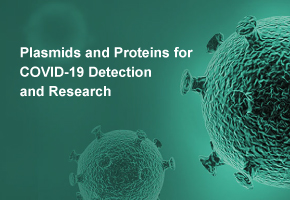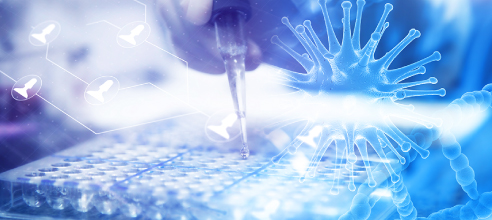A Guide on RNP System for CRISPR Editing (2)
If you missed A Guide on RNP System for CRISPR Editing(1), we will attach it here. You can find the information about how to prepare RNA oligos and RNP complex. Today, this issue covers topics on:
l How to test RNP efficacy in
cells, through either cationic lipid-mediated transfection or electroporation?
l How to test RNP efficacy in
embryos?
l How to test RNP in vitro cutting efficiency?
Test RNP Efficacy in Cells
RNP
testing is best performed in easy-to-handle cell lines, such as HEK293 cells,
to confirm gene editing efficiency. For such cells, Lipofectamine™ CRISPRMAX™
are recommended for transfection. The following protocol is recommended for
Lipofectamine™ CRISPRMAX™.
Ø CRISPRMAXTM
Procedure
1.
Seed
well-dissociated cells one day (16–24 hours) prior transfection in D10 medium
without antibiotics.
TIP: 30–70% confluency at the time of transfection is
recommended. If confluency is too high, this can negatively impact transfection
efficiency.
2.
Prepare
RNP complex and transfect cells following Lipofectamine™ CRISPRMAX™ protocol.
3.
Harvest
the cells approximately 48 hours after transfection. Extract the genomic DNA
for further analysis.
4.
PCR
amplify the fragment containing the target (for best results, design the
primers to target >200bp away from the target) and test the genome editing
efficiency by T7E1 or by Sanger Sequencing.
Ø How
to Use the HPRT Positive Control?
It
is recommended to use GenScript’s human HPRT positive control and a non-coding
negative control gRNA to optimize transfection conditions and find the
condition that gives the highest gene editing efficiency and cell viability.
1.
Seed
well-dissociated cells one day (16-24 hours) prior to transfection in media
lacking antibiotics.
2.
Determine
different transfection conditions that need to be tested, including cell
density at the time of transfection, different gRNA to Cas9 ratio, transfection
reagent quantity, incubation time period, etc.
3.
Prepare
RNP complex and transfect cells following Lipofectamine™ CRISPRMAX™ protocol.
Harvest cells approximately 48 hours to 72 hours after transfection and extract
genomic DNA for analysis.
4.
PCR
amplify genomic fragments using GenScript Human HPRT Primers and verify genome
editing efficiency via sequencing or T7E1 digestion assay.
Ø Electroporation
Procedure for Suspension Cell Line (THP-1, U937)
The
following procedure is for electroporation of suspension cells with an electroporator,
Celetrix. It is highly suggested to optimize the electroporation condition for
each cell line by electroporating a positive control (e.g. HPRT). The RNP can
also be electroporated by other electroporators following manufacturer’s
manuals.
1. Collect
3*106 cells and spin cells at 800rpm for 5 minutes. Decant
supernatant and wash cells with PBS. Spin cells again and decant PBS.
2.
Resuspend
cells with 65μl electroporation buffer.
3.
Mix
1.6μl Cas9 nuclease (10mg/ml) and 200pmol sgRNA in a 1.5ml EP tube. Add
electroporation
buffer in the tube to a final volume 65μl and mix gently. Incubate at room
temperature for 10 minutes.
4.
Mix
the solution of step 3 and the resuspended cells of step 2 gently. Incubate for
10 minutes.
5.
Transfer
the mixture of step 4 to the electroporation tube.
6.
Electroporate
following Celetrix operation procedure using an appropriate voltage (700V
suggested to THP-1, 660V suggested to U937).
7.
Harvest
the cells approximately 48-72 hours after transfection. Extract the genomic DNA
for further analysis.
8.
PCR
amplify the fragment containing the target (for best results, design the
primers to target >200bp away from the target) and test the genome editing
efficiency by T7E1 or by Sanger Sequencing.
Note: The electroporation can be used
for iPS or ES cells following manufacturer’s manuals.
Test RNP Efficacy in Embryos
RNP
testing can also be performed in embryos, such as mouse or zebrafish, to confirm
gene editing efficiency. The following zebrafish protocol can be used as an
example:
1. Prepare 10μl RNP complex in a nuclease-free tube:
2.
Incubate
the tube at 37°C for 10 minutes to allow RNP complexing.
3.
Microinject
~1nl RNP Mix into embryos at the 1-cell stage.
4.
When
embryos reach 24hpf, collect at least 5 of the injected embryos and extract
their genomic DNA.
5.
PCR
amplify the fragment containing the target (for best results, design the
primers to target >200bp away from the target) and test the genome editing
efficiency by T7E1 or by Sanger Sequencing.
Test RNP in vitro Cutting Efficiency
Depending
on the target site, it may be necessary to perform in vitro testing of the
CRISPR/Cas9 system prior to introducing RNP into cells.
1.
Prepare
the PCR amplicon as the substrate of CRISPR/Cas9 RNP digestion. When designing
the amplicon, add at least 200bp on either side of the guide RNA target.
TIP: A longer amplicon will give a
clearer band when the sample is run on a gel to verify successful cutting. We
typically use amplicons around 1kb.
2.
Prepare
16 μl RNP complex in a nuclease-free tube:
3.
Incubate
the tube at 37°C for 10 minutes to allow RNP complexes to assemble.
4.
Add
160ng of PCR amplicon into 16μl RNP Mix. Bring the final volume to 20μl with
nuclease-free water and mix gently.
5.
Incubate
the reaction for at least 30 minutes at 37°C.
6. Assess the reaction by gel electrophoresis. If the reaction works correctly, two distinct bands will appear on the gel.
CRISPRRibonucleoprotein (RNP) User Manual
Related articles
Top Genome Editing Breakthroughs in 2020
Glycosylase base editors enable C-to-A and C-to-G base changes
How to Select CRISPR/Cas9 Expression System?
Rapid Multicopy Chromosomal Integration Renovates the Way Cell Factories are Built
CRISPR-CasФ: A new all-in-one hypercompact genome editor
- Like (3)
- Reply
-
Share
About Us · User Accounts and Benefits · Privacy Policy · Management Center · FAQs
© 2025 MolecularCloud




